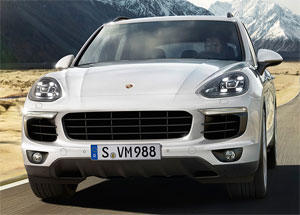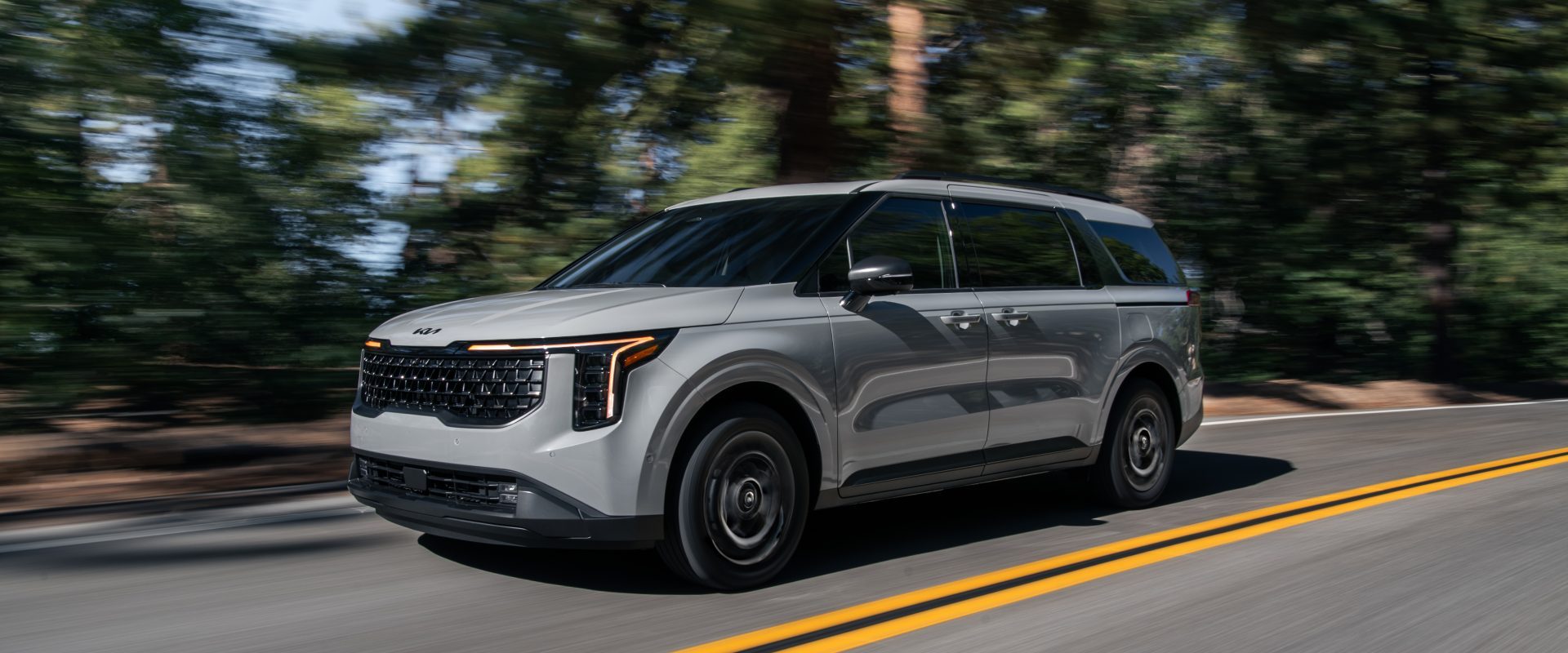2017 Porsche Cayenne S E-Hybrid
We all know that car makers are on a mission to increase fuel economy in all of their vehicles, mostly because of ever-stiffening regulations. Well increasingly, PHEVs are the hot ticket to get that done. Even Porsche is not immune to this, having applied the plug-in treatment to the Panamera sedan back in 2014. But now they’re getting much more serious, and what better vehicle to showcase that ultimate eco-performance in, than the Cayenne.
 Yes, it’s all about the utilities in the luxury market these days; so this 2017 Porsche Cayenne S E-Hybrid will almost assuredly drum up its fair share of attention.
Yes, it’s all about the utilities in the luxury market these days; so this 2017 Porsche Cayenne S E-Hybrid will almost assuredly drum up its fair share of attention.
Now, some might still look at a plug-in hybrid utility as a bit silly, perhaps even a waste of money; but keep in mind these vehicles are mostly designed for a European market that aims to do away with the internal combustion engine in major cities.
So, obviously there’s a market for people who want to maintain their current level of posh transportation, yet have the benefits of an EV when necessary.
Powertrain stats begin with a supercharged 3.0-liter V6 delivering 333-horsepower and 325 lb-ft. of torque on its own. Add in a 70kW electric motor, and output climbs to 416-horsepower and 435 lb-ft. of torque.
The 10.8kWh battery allows for 14-miles of EV-only driving at speeds up to 78 miles-per-hour.
Both an 8-speed tiptronic automatic transmission and all-wheel-drive are standard.
Like the best of plug-ins that we’ve sampled, the Cayenne delivers seamless operation; requiring you to keep an eye on the tach or power meters if you care where the power is coming from.
You can be certain that Porsche wants to preserve their performance image at all costs, so this Cayenne is indeed very fast; especially when the battery is full and boost mode is available, a bit less so without battery assistance.
 At the track, with all systems full-go, we hit 60 in just 5.4-seconds. That’s almost two seconds quicker than the no longer available Cayenne turbo diesel.
At the track, with all systems full-go, we hit 60 in just 5.4-seconds. That’s almost two seconds quicker than the no longer available Cayenne turbo diesel.
There’s a decent amount of torque at launch, and it builds even more as you get rolling. Shifts were not PDK-quick, but efficient enough to keep the gears coming, as we finished out the ¼-mile in 13.9-seconds at 103 miles-per-hour.
And as spirited as that is, it gets even better when you start throwing curves at it. Through the cones, we found little to no over or understeer; just great balance and point-and-shoot precision, with virtually no body roll to upset things, despite pushing 5,200-lbs of curb weight.
Steering is quick, and sure it could use a little more feel; but no matter how hard we pushed this Cayenne, it seemed to be begging us for more.
Porsche likes to differentiate their plug-ins with Acid Green brake calipers, and little else. And while they tend to look cool accompanying a silver or black vehicle, most thought they clashed with our Cayenne’s Mahogany Metallic livery.
That aside, the Cayenne’s form really hasn’t changed all that much in its 14-years on the streets. There are still plenty of 911 design cues, combined with a sleek profile that fully portrays its performance potential.
 The interior is busy, but well laid out as always. There are unique gauges and drive mode setup, but otherwise things are mostly the same throughout the rest of the space.
The interior is busy, but well laid out as always. There are unique gauges and drive mode setup, but otherwise things are mostly the same throughout the rest of the space.
Available Platinum trim adds Apple CarPlay, illuminated door sills, upgraded Bose audio, heated front seats, and Alcantara trim among other things, though surprisingly…still no back-up camera.
Government Fuel Economy Ratings are 22-Combined when operated in gasoline only mode; and climb to 46-Combined when EV driving is added in. Our loop was an EV-free one; still we managed 23.0 miles-per-gallon of Premium.
There’s a great Energy Impact Score of just 9.5-barrels of annual oil use, accompanied by 4.3-tons of CO2 emissions.
Cayenne S E-Hybrid’s start at $79,750, almost 20-grand over a base Cayenne; but a Platinum Edition with much more content is available for only a bit more at $82,650.
We can surely appreciate the effort and engineering that went into creating the 2017 Porsche Cayenne S E-Hybrid. But really, at this time, at least in this market, like a lot of other luxury plug-ins, it remains a niche vehicle built for boasting your ecodentials more than being a must-have vehicle.
In our eyes, it needs a much bigger battery, with much more EV range, for it to truly make sense here. Ah, but it still drives like a Porsche. And after all, that may be more than enough reason for this clean-rolling piece of engineering excellence.
Specifications
- Engine: 3.0-liter V6
- Horsepower: 333
- Torque: 325 lb-ft.
- 0-60 mph: 5.4 seconds
- 1/4 mile: 13.9 seconds @ 103 mph
- EPA: 22-Combined gas only mode / 46-Combined with EV
- Energy Impact: 19.5 barrels of oil/yr
- CO2 Emissions: 4.3 tons/yr
2025 Kia Carnival Hybrid
Kia Adds Hybrid Assistance To Keep The Party Going
For 2022, Kia gave their minivan a major reboot. So much so, they changed the name to Carnival and even stopped calling it a minivan. Well, they can’t fool us though. After all, we love minivans for their all-around practicality. Well for 2025, Kia has updated its multi-purpose people mover, including adding hybrid power. So, let’s see if that makes time in the new Carnival even more festive.
With many brands no longer even competing in the minivan segment, it’s noteworthy that not only is Kia still in the game, they’ve given their multi-purpose 2025 Carnival a major update after only 3 years on the market. That update includes a first-time optional hybrid powertrain.
The Carnival Hybrid config is an extension of the Sorento SUV’s setup, pairing a 1.6-liter turbo-four engine with a larger 54-kW electric motor. Combined output of 242 horsepower, 15 more than Sorento. Total torque is a stout 271 lb-ft, getting to the front wheels through a true six-speed automatic transmission. Throw in a full 19-gallon fuel tank and you’ve got close to 600 miles of range, allowing you to keep the party going farther than before.
The V6 Carnival remains available, although it’s now listed at 287 horsepower, down from 290. But the Government Fuel Economy Ratings take a huge leap here in the Hybrid; from 18 City, 26 Highway, 21 Combined to 34 City, 31 Highway, and 33 Combined.
The Hybrid comes with a few additional tricks up its sleeve, the most noticeable being the dial-like shifter in the console. But there is also a pretty clever regen braking setup that Kia calls E-VMC. The Electrification-Vehicle Motion Control has three levels of regen, but also has an E-Handling component which adjusts regen going into corners and amounts of electric assist when coming out of them; E-Ride, which includes unique shock tuning for the Hybrid but also can engage the electric motors to mitigate harsh impacts; and E-Evasive Handling Assist, which kicks in during emergency maneuvers. All techy cool!
Another step in Kia’s efforts of making everyone forget this MPV is actually a minivan.
All Carnivals regardless of powertrain get updated styling for ’25 which includes a new face that trades the concave grille for a flatter, larger one. The headlights are no longer incorporated into the grille, and the daytime running lights are much snazzier. In back, the taillights take on a completely different look, with much larger vertical elements on the sides. The liftgate gets a chunkier SUV-like vibe and the rear bumper is more pronounced than before. Altogether, another step in Kia’s efforts of making everyone forget this MPV is actually a minivan.
There’s upgraded tech for the inside, namely Kia’s new frameless panoramic display that incorporates both the 12.3-inch driver display and 12.3-inch touchscreen infotainment. It not only looks better, but processing speeds are much faster. The driver’s display gets a completely new theme with modern bar and number style speed displays instead of virtual gauges. A Full Display Mirror is also now available, which can switch from traditional mirror to camera.
The Hybrid has a bit less horsepower but 10 additional lb-ft of torque, so off to Mason Dixon Dragway for some numbers. It certainly didn’t feel underpowered, spinning up the tires off the line and even chirping on the shift into second. We hit 60 in a respectable 8.0 seconds, which is still .80 slower than the V6. Our best quarter-mile time was 16.2 seconds at 88 mph.
There was a different vibe to the handling experience, as E-Handling virtually eliminated understeer. But there was still some body roll and stability systems were eager to engage quickly. The brakes retain a natural feel, and stopping distances averaged a good 110 feet from 60.
The Carnival Hybrid is available in four of the Carnival’s five trims, all but the base LX. So, a base LXS Hybrid goes for $42,235, a $2,000 premium over the V6.
The 2025 Kia Carnival Hybrid offers more than just much better fuel economy. Kia has found a way to integrate battery assistance into just about every mechanical aspect of the vehicle, delivering a driving experience that is unique from its V6 counterpart, and adding more good vibes to an already exceptional family vehicle.
Specifications
As Tested
- Engine: 1.6-liter turbo-4
- Transmission: 6-speed automatic
- Horsepower: 242
- Torque: 271 lb-ft
- 0-60 mph: 8.0 seconds
- 1/4 Mile: 16.2 seconds at 88 mph
- Braking, 60-0 (avg.): 110 feet
- EPA: 34 City | 31 Highway | 33 Combined







